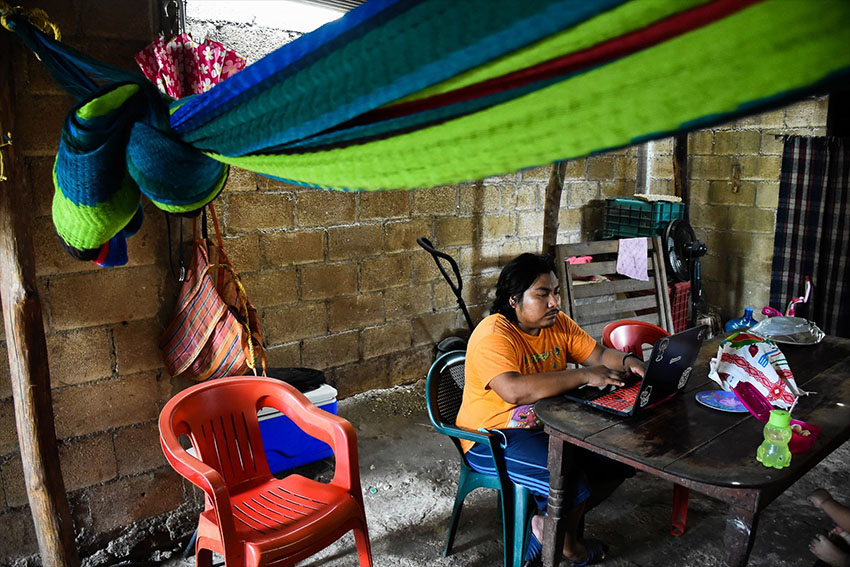A Campeche man will contribute to NASA’s mission to explore Titan, the largest moon of Saturn.
Guillermo Adrián Chin Canché, a Mayan man currently studying in Ensenada, Baja California, will assist the U.S. space agency in its mission to deliver an eight-bladed rotorcraft dubbed “Dragonfly” to Titan.
“Slated for launch in 2027 and arrival in 2034, Dragonfly will sample and examine dozens of promising sites around Saturn’s icy moon and advance our search for the building blocks of life,” NASA says on its website.
“During its 2.7-year (32-month) baseline mission, Dragonfly will explore Titan’s diverse environments and take advantage of its dense nitrogen-based atmosphere – four times denser than Earth’s – to fly like a drone.”

Chin Canché, a physical oceanography student at Ensenada’s Center for Scientific Research and Higher Education, told the EFE news agency that his research in the fields of planetary science and astrobiology allowed him to collaborate on the Dragonfly project. He will be the only Mexican to contribute to the mission.
Chin Canché said he will work with NASA to study the atmosphere of Titan, which is larger than the planet Mercury and the second largest moon in the solar system. He said the aim of his work is to “predict meteorological phenomenons,” including turbulence that could affect Dragonfly’s flight.
“Participating in this project means a lot, it’s the culmination of my efforts and work, but the most important thing is that it reflects the knowledge I inherited from my Mayan ancestors, who were wise astronomers,” the student said.
Chin Canché, who is originally from a community about 25 kilometers northeast of Campeche city, said he was very happy to have the opportunity to work with more than 100 scientists from around the world. He said he would be representing his home town of Bethania and “the entire Yucatán Peninsula” during his collaboration with NASA.
“I would be nobody without my people, without my Mayan heritage,” Chin Canché told EFE.
“I thank all the people who helped me at difficult times – my friends, my classmates, teachers and everyone who in one way or another provided something that helped me get to where I am at this time in my life,” he said. “In the NASA project I will give 100% of my heart,” added Chin Canché.
NASA says that “the basic building blocks of life on Titan are expected to be similar to those on Earth before life arose” and “Dragonfly’s instruments will help advance astrobiology and study how far pre-life chemistry may have progressed.”
“Additionally, its instruments will investigate the moon’s atmospheric and surface properties, subsurface ocean, liquid reservoirs, and areas where water and complex organic materials key to life once existed together for possibly tens of thousands of years,” it says.
Titan is about 1.4 billion kilometers from the sun and has a surface temperature of about -179 Celsius, according to NASA.
With reports from EFE
